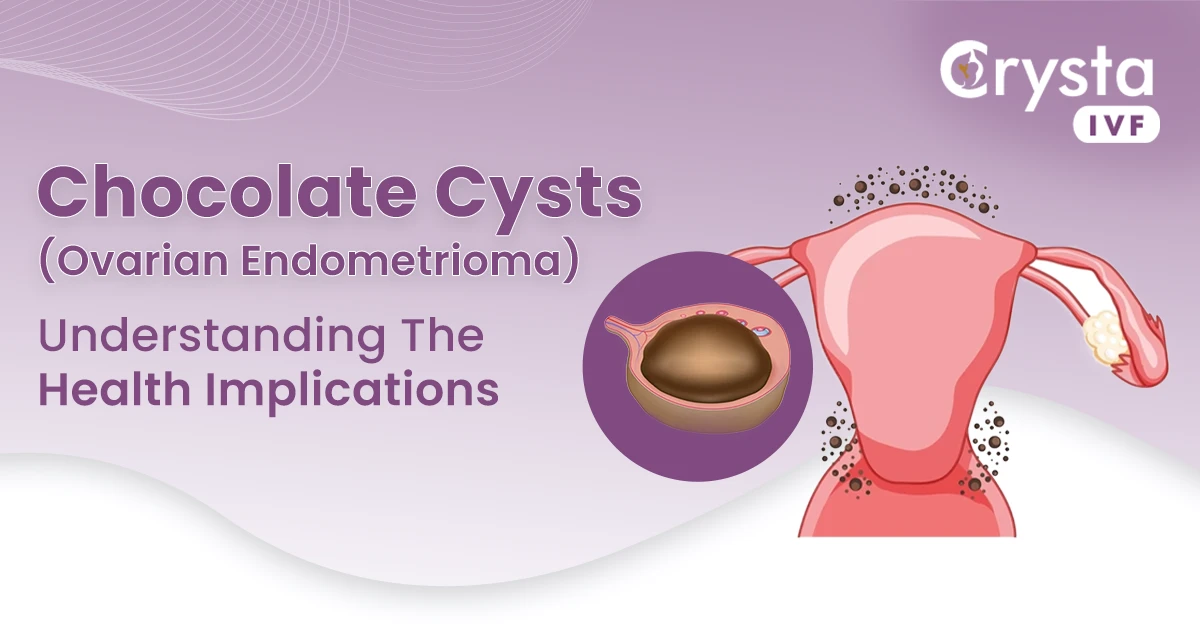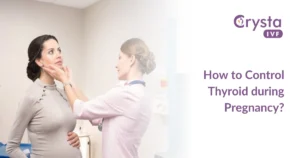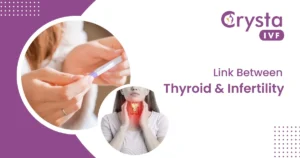Despite having an odd name, “chocolate cysts” pose serious health risks. These are dark sacs filled with fluid that are found on the ovaries. Chocolate cysts, also called ovarian endometriomas, indicate endometriosis, a disorder in which endometrial tissue—the tissue that lines the uterus—grows outside of it. This misplaced tissue, especially during periods, reacts to the menstrual cycle and causes pain and inflammation. It can sometimes form cysts, described as “chocolate,” because they are frequently filled with old blood and tissue.
Although not cancerous, Chocolate cysts can be troublesome. They can cause bloating, pelvic pain, and even impair fertility. You must see a doctor if you encounter any of these symptoms so that they can diagnose you and discuss your treatment options. This blog will help clarify the situation so you can treat the illness appropriately and better understand it.
Targeting Menstruating Women
Endometriosis can affect anyone who menstruates, especially those between 25 and 40 years old. The American Society for Reproductive Medicine (ASRM) classifies endometriosis into four stages based on the amount and depth of tissue outside the uterus.
Stage 1: Small amount of surface-level tissue.
Stage 2: More tissue, some embedded.
Stage 3: Lots of deeply embedded tissue, including small endometriomas.
Stage 4: Lots of deeply embedded tissue, including large endometriomas.
If you have ovarian endometrioma, you’re in Stage 3 or 4.
Causes of Chocolate Cyst:
The exact cause of the chocolate cyst is still unknown or under debate, but the leading belief as to why it happens can be pointed towards a condition called endometriosis. Here’s some more information:
Endometriosis: This occurs when tissue similar to the lining of the uterus (endometrium) grows outside the uterus. This misplaced tissue reacts to the menstrual cycle, causing inflammation and pain and sometimes forming cysts.
Retrograde Menstruation: Another theory suggests that during menstruation, some menstrual blood and tissue flow backward through the fallopian tubes into the pelvic cavity, where it can implant and grow on the ovaries, forming cysts.
Immune System: Sometimes, the immune system may not function well, allowing endometrial tissue to implant and grow outside the uterus.
Genetics: Research suggests that chocolate cysts can also have a genetic link, aiming at the possibility that a member or two from your family might also have this condition.
Chocolate Cyst Symptoms
Chocolate cysts don’t need to present themselves with symptoms. It has been seen that while some women do encounter certain symptoms, others do not. Another key point about Ovarian Endometrioma or “Chocolate Cysts” is that its size does not necessarily affect the severity or present symptoms. Women with small cysts may encounter heavy symptoms, while others with larger cysts may not. The length of cysts can range from 2 to 20 centimeters.
Here’s a list of symptoms that you may encounter:
- Painful, crampy periods
- Pelvic pain not related to your menstrual cycle
- Irregular periods
- Pain during sex
- Infertility for some women
Cysts can also cause severe abdominal pain on the side of the body if it bursts. Remember that a ruptured cyst can be a medical emergency; you should visit the doctor when it happens.
Diagnosing Chocolate Cysts
To diagnose chocolate cysts, your doctor may use different methods:
- Pelvic Exam: During a pelvic exam, your doctor might feel if there’s a cyst.
- Symptoms and Infertility: Diagnosis can also be based on your symptoms, especially if you’re experiencing unexplained infertility.
- Ultrasound: An ultrasound can reveal if you have cysts.
To confirm the presence of a chocolate cyst, doctors can perform a needle biopsy. This involves using ultrasound to guide a needle through the vagina into the cyst, extracting fluid and debris. The extracted material is then examined under a microscope to determine whether it’s an ovarian cyst.
Chocolate Cyst Treatment
Chocolate cyst removal or treatment depends on several factors, such as:
- Age
- Symptoms
- If it has affected one or both ovaries
- Whether you wish to have children or not
Chocolate cyst treatment without surgery: If the cyst is benign and does not present symptoms, your doctor can suggest waiting or prescribing some medicines that inhibit ovulation, as it can help control the pain and slow down the growth of the cysts. However, bear in mind that it won’t cure them.
Chocolate cyst diet:
You can also try these healthy food habits as they can help you manage “chocolate cysts”:
- Consume a lot of healthy fats like salmon, tuna, walnuts, chia seeds, etc.
- Eat small amounts of mineral-rich food such as dark chocolate, spinach, black beans, nuts, and seeds.
- Enrich your body with zinc from crabs, chicken, and oysters.
- Spices and other food items such as olive oil, turmeric, kale, black pepper, and garlic can also be used.
However, there is another way to treat chocolate cysts – the surgical way. It’s done through laparoscopy and is recommended for women who have:
- Infertility
- Painful Symptoms
- Cysts bigger than 4 cm
- Cysts that may turn cancerous (which is less than 1%, but still, precaution is mandatory)
However, there is an issue with surgery. Likely, healthy tissues can also be removed when ovarian cysts are removed. However, surgery might not be as detrimental to fertility as the inflammation and poisonous environment that a chocolate cyst can create.
Effects of Chocolate Cysts on Fertility
If left untreated, chocolate cysts can invade, damage, and take over healthy ovarian tissues, affecting your chances of conceiving negatively. Chocolate cyst impacts on women are:
- Fewer eggs
- Eggs that are less likely to mature
- Higher levels of follicle-stimulating hormone (FSH)
Although chocolate cysts impact fertility, the risk factors related to surgery where even healthy ovarian tissues can end up being removed, many women with such cysts decide to conceive naturally.
As per a study done in 2015, 43% of women with regular menstrual cycles and chocolate cysts on only one ovary were able to conceive naturally. However, for women who are unable to conceive due to the cysts, In Vitro Fertilization is another option for them.
Conclusion
In conclusion, ovarian endometriomas, or chocolate cysts, can cause serious health risks in women who menstruate. Although they are not cancerous, they can cause bloating, pelvic pain, and problems with conception. Pelvic exams, symptom assessment, ultrasound scans, and needle biopsies are used in the diagnosis process. Depending on the symptoms, desired level of fertility, and size of the cyst, treatment options can include medication, dietary modifications, and surgery. Effective management of chocolate cysts requires timely diagnosis, appropriate treatment, and increased awareness of the condition.
FAQs:
Q. Can chocolate cysts shrink?
Ans. Unfortunately, chocolate cysts (ovarian endometriomas) rarely shrink on their own. Treatment options exist to manage symptoms and fertility concerns, but shrinking the cyst itself usually requires medical intervention.
Q. Can I get pregnant with a chocolate cyst?
Ans. Yes! According to a 2015 study, 43% of women with regular menstrual cycles and single-ovary chocolate cysts could conceive naturally. However, In Vitro Fertilisation is an additional option for women whose cysts prevent them from becoming pregnant.
Q. Is chocolate cysts dangerous?
Ans. Small and asymptomatic cysts usually go away independently and don’t hurt much. However, if the cysts enlarge and fill with menstrual blood and fluid, they can cause problems like pain in the pelvic region, affect fertility, and more.




